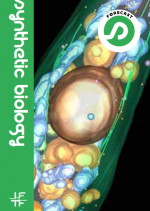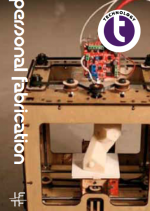Future Now
The IFTF Blog
Prepare Yourself for Life in the Programmable Age
Programming has long conjured images of computer engineers toiling away in solitude, but that is quickly changing—if you follow our thinking, you too will soon be configuring future outcomes. In developing the research for When Everything is Programmable: Life in a Computational Age, a proprietary set of materials that has just been made public, our researchers looked to address ways that we will use processes to control our bodies, minds, and surroundings. Four visual components, including playable forecasting cards and a map that considers ways that sensing and programming tools will re-shape our world, are now available to the public.
In our 2010 research we looked at how nanotechonology and self-assembling intelligent robots aren’t the only programmable matter that will change how we understand and interact with the physical world. Everyday topics including learning, body awareness, and online sharing will also be planned and programmed for increased well-being.
The best place to start is our Map for the Programmable World developed to help navigate a future that will be increasingly computational and complex. Its cylindrical format includes factors that will impact the individual self, society, and the environment. Among the opportunities it presents is access to sophisticated tools and methodologies for modeling complex systems and phenomena. The map also shows potential pitfalls, such as over-reliance on these models that could make us unable to act in the absence of data (think of when your GPS stops working while driving and you get a window into what this paralysis might be like).
The 13 major themes outlined in the report and seen on the map have implications for cities, industries, and individuals, including:
- Everyone is a Programmer: More disciplines will require computational thinking skills to make sense of the exponentially increasing data available. In response, novice-friendly programming languages and technologies that teach the fundamentals of programming virtual and physical worlds will be made available and ultimately increase our manipulation of built environments.
- Embedded Governance: Where laws are enforced by people, they’ll increasingly be implemented by automated policing and regulation systems with the intention of making it harder to break the rules. You’ll see that the act of downloading laws into objects and the environment may also have major privacy implications.
- Neurocentric Learning: We’ll see educators and scientists working with the brain, not just formal teaching structures, to help people learn more effectively. You too will do well to familiarize yourself with the basic concepts of neuroscience. And while you’re at it, you may be able to code your brain for desired functionality, including behavior modification, treating of disease, and illumination of the consciousness. And why not? "Creativity, happiness, and even spiritual experience will be invoked through neuroprogramming," as readers of the report learn.
When you’re ready to start using this thinking, you can turn to the When Everything is Programmable Technology and Forecast Deck for a bit of game time. The cards were created to make the research more interactive. You can even create your own Map for the Programmable World by using the blank map template. Start with the forecast cards and pick 4-5 that resonate with you. Pick 2-3 technology cards that apply to your forecast, then write out the implications related to each one in the space provided on the template. Then, come up with strategies for how to work with and benefit from each of the chosen forecasts.
Across the new research we learn that our personal and societal interactions will become more trackable, and we’ll increasingly analyze them to create more desirable outcomes. Which parts of your life do you see this having the greatest impact on? What do you look forward to having more say over, and what concerns you? We appreciate your feedback as you read, play, and program.





